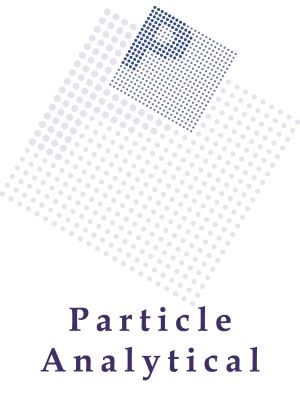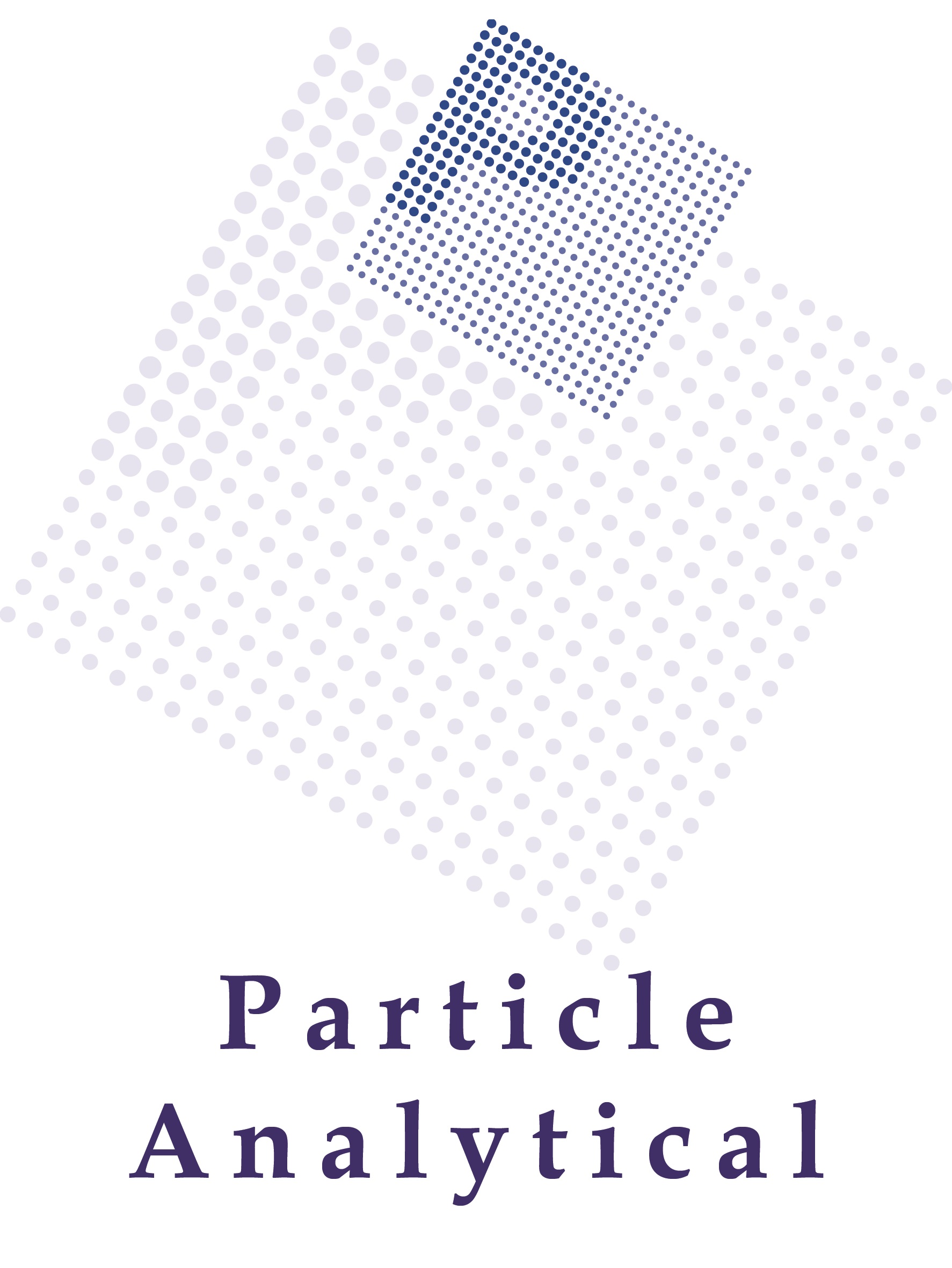By Particle Analytical…
Method development for particle characterization
Method validation is the process used to confirm that the analytical procedure employed for a specific test is suitable for its intended use. Meanwhile ‘particle characterization’ describes the size, shape and properties of discrete sub-portions of a substance. The term particle is typically applied to dry powders or granules but can also be understood as droplets, suspensions, emulsions, aerosols or sprays.
Rigorous method development for particle characterization is vital in the overall purposes of studying particles within the pharma business to assure product quality, demonstrate regulatory compliance and achieve superior understanding of products, ingredients and processes to enhance overall performance and competitiveness.
Results from method validation can be used to judge the quality, reliability and consistency of analytical results.
Method development
Particle Analytical performs method development and validations for all particle characterization methods and analytical techniques within a portfolio of all pharmaceuticals that also includes controlled substances.
Revalidation of analytical methods is required:
- Whenever conditions change for which the method has previously been validated
- Before introduction into routine use;
- Whenever the method exceeds original scope.
Particle characterization
The exact form of particle characterization will depend on the particle properties that are key to the substance being studied. These basically are determined by chemical composition and the physical properties that shape the behavior of particulates, driving material characteristics such as solubility, reaction, flowability, compressibility, etc.
For manufacturers and developers, the key physical properties of particles include:
- Size: the most important single property with key effects on product behaviors such as reactivity, solubility, stability, efficacy in delivery, appearance and ‘feel’ as well as manufacturing considerations such as flow, handling, viscosity and packing density.
- Shape: Affecting most of the product and manufacturing variables listed above, as well as abrasive efficiency, texture, and dispersion when combined with agglomerates.
- Surface form: specific surface area measured as Sauter Mean Diameter is important in determining bioavailability, reactivity and dissolution and is highly sensitive to the presence of fine particulates in the overall size distribution.
- Charge properties: the magnitude of the electrostatic or charge repulsion or that attraction between particles in liquid suspension (Zeta potential) that fundamentally affects stable dispersion.
- Microstructure: the internal or microstructure of the particle will have a significant influence, along with mechanical properties, if defining the stability and performance of the product.
Particle Analytical method development for particle characterization
Particle Analytical is able to deploy a wide range of sophisticated tools and techniques to determine the complete properties of particulate forms, including controlled substances. Methods include:
Polymorph Screening and Examination
The crystalline structures, or polymorphic forms, of solid materials confer differing physicochemical properties that impact on the intended use of the material. Polymorph screening should always be performed to mitigate the risk of sudden breakdown during development, necessitating re-analysis for stability, dissolution and compatibility, or during clinical development, posing serious risks for patient safety.
BET (Brunauer, Emmett and Teller)
The BET method measures the specific surface area and pore size distribution of a sample to predict dissolution rate and also bioavailability. It can also help evaluate product performance and manufacturing consistency.
Bulk and Tapped Density
The bulk density of a material is the ratio of the mass to the volume (including the interparticulate void volume) of an untapped powder sample. The compressibility index and Hausner ratio are measures of the products ability to settle, and permit an assessment of the relative importance of interparticulate interactions.
Density determination
PA uses gas pycnometry to determine the density of powders, a requirement to determine the surface area by air permeability. Gas pycnometric density is determined by measuring the volume occupied by a known mass of powder/particles, which is equivalent to the volume of gas displaced by the powder using a gas displacement pycnometer.
Determination of refraction index
Particle Analytical is one of very few companies in the world that can determine the refraction indices of compounds – defining how light/radiation, propagates through that medium, using Fraunhofer or Mie optical models. This is a key determinant of particle size and distribution.
Differential Scanning Calorimetry (DSC)
DSC is used to study thermal behaviour: all physical processes taking place during heating and cooling of a pharmaceutical compound. This is a key element in physical characterization of a pharmaceutical compound, affecting Glass Transitions, Melting and Boiling Points, Crystallization, purity, relative stability and specific heat capacity.
Dissolution rate measurements (non-GMP)
The dissolution rate is a measure of the actual release rate of the compound at the given particle size etc. in an aqueous media that varies considerably with solid form, e.g. particle size and shape. Dissolution testing can ensure production processes are under control and evaluate the development potential and bioavailability of a compound.
Dynamic Light Scattering (DLS)
DLS measures molecule size to determine distribution of organic and inorganic nano-particles and pigments. DS also gauges effects of temperature on particle size and stability.
Dynamic Vapor Sorption (DVS)
DVS is a gravimetric technique that measures water sorption and hygroscopicity, affecting the compound’s behaviour under storage as well as general stability.
Flowability
Knowledge of the flow properties/flowability of powders is necessary to ensure no problems occur in bulk solid handling or powder transfer. Physical properties such as particle size, size distribution, shape, surface area, and density all play a role in how powders flow. Furthermore, these can change under the effects of different environments. The Particle Analytical flowability tests are in accordance with the procedure described in Ph.Eur.
Fourier Transform Infrared Spectroscopy (FTIR)
FTIR passes infrared radiation through a sample to produce a spectrum representing molecular absorption, creating a molecular ‘fingerprint’ of the sample. This allows multiple findings, such as identification of API, isolation of impurities, quantification of components in mixtures or examination of changes in the solid state due to interactions with excipients.
Hot Stage Microscopy (HSM)
HSM is a non-GMP technique that gives a unique opportunity to follow thermal changes visually and track behavior of materials as a function of temperature and time. Combining microscopy and thermal analysis generates insights into particle morphology, along with valuable information about the compound with regard to melting point and other transformations during heating.
Intrinsic Dissolution Rate (IDR)
IDR is another non-GMP measurement that describes how fast the compound is released from the crystal lattice into solution. This is a major factor in determining the behavior of the compound in vivo.
Laser diffraction
Laser diffraction is a highly effective tool for determining the particle size distribution that is so critical is drug development, with major impacts on reactivity, dissolution rate, flowability etc. The particle size distribution measured by laser diffraction can further be used to detect batch-to-batch variations, test the influence of production changes on the particles and to identify agglomerates.
Microscopy and digital image analysis
In this technique, microscopy and digital image analysis used to determine particle size distribution, particle shape and provide overviews of particle dispersal in liquid or air.
Osmometry (non-GMP)
Osmometry is a highly useful non-GMP technique for development of pharmaceutical formulations, using an osmometer to measure the freezing point depression of an aqueous solution caused by the presence of solutes (ions, organic molecules, macromolecules etc.).
Particle counting
Particle counting measures the time a particles blocks the light when it passes a laser and this is used to count and size the particles. This technique is used for measuring particle size distributions and for counting the number of particles in a suspension with a low content of particles, or when the total number of particles in the suspension is of interest.
Scanning Electron Microscopy (SEM)
Particle Analytical uses a Scanning Electron Microscope to visualize crystal shape, surface morphology and structure of particles or agglomerates and evaluate product surface characteristics. The SEM detectors for Secondary Electrons and Backscatter help analyse for differences in molecular density.
Thermogravimetric Analysis (TGA)
TGA measures weight change in a material, caused either by increasing temperature, or as a function of time, in an atmosphere of nitrogen or air. This can show if a compound containing solvents or other loosely bound molecules might evaporate upon heating. The method complies with Ph. Eur. 2.2.34.
UV-VIS spectroscopy
UV/VIS spectroscopy is used in analytical chemistry for the quantitative determination of different analytes containing nano-electrons or non-bonding electrons. In particulate characterization, it can quantitatively determine different concentrates in solution as a basis for solubility and dissolution/IDR measurements.
X-Ray Diffraction (XRD)
XRD or XRPD (X-Ray Powder Diffraction) analysis are highly targeted methods for determining crystallinity of a compound. XRD is primarily used to quantify the percentage crystallinity of a sample, identify crystalline material used for regulatory purposes or during development), identify different polymorphic forms (“fingerprints”) and distinguish between amorphous and crystalline material.
Method development on controlled substances
Particle Analytical is approved as a GMP laboratory by the Danish Medicines Agency, with permission to handle controlled substances that include active pharmaceutical ingredients (APIs)) containing hazardous elements such as certain hormones, steroids or cytotoxins. GMP certification is dependent on facilities that combine several essential aspects:
- Appropriate facility design and layout, with emphasis on safe containment
- Closed systems and/or barrier technology for operator protection;
- Effective standard operating procedures (SOPs)
- Environmental control systems (ECS) or heating, ventilation and air-conditioning (HVAC) ventilation/extraction systems
- Personal protective equipment (PPE) plus appropriate degowning and decontamination procedures
- Industrial hygiene (monitoring staff exposure levels), medical surveillance and administrative controls



















